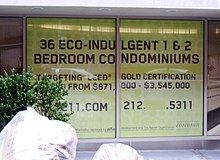Stem Cell Cloning
The cloning procedure works by combining a patient's body cell with an unfertilized egg cell from a donor. The patient's skin cell is inserted into the outer membrane of the egg cell and chemically induced to begin developing into a blastocyst. In the blastocyst, embryonic cells divide, producing a mass of stem cells.
Cloning/Embryonic Stem Cells
The term cloning is used by scientists to describe many different processes that involve making duplicates of biological material. In most cases, isolated genes or cells are duplicated for scientific study, and no new animal results. The experiment that led to the cloning of Dolly the sheep in 1997 was different: It used a cloning technique called somatic cell nuclear transfer and resulted in an animal that was a genetic twin -- although delayed in time -- of an adult sheep. This technique can also be used to produce an embryo from which cells called embryonic stem (ES) cells could be extracted to use in research into potential therapies for a wide variety of diseases.
Thus, in the past five years, much of the scientific and ethical debate about somatic cell nuclear transfer has focused on its two potential applications: 1) for reproductive purposes, i.e., to produce a child, or 2) for producing a source of ES cells for research.
Cloning for Reproductive Purposes
The technique of transferring a nucleus from a somatic cell into an egg that produced Dolly was an extension of experiments that had been ongoing for over 40 years. In the simplest terms, the technique used to produce Dolly the sheep - somatic cell nuclear transplantation cloning - involves removing the nucleus of an egg and replacing it with the diploid nucleus of a somatic cell. Unlike sexual reproduction, during which a new organism is formed when the genetic material of the egg and sperm fuse, in nuclear transplantation cloning there is a single genetic "parent." This technique also differs from previous cloning techniques because it does not involve an existing embryo. Dolly is different because she is not genetically unique; when born she was genetically identical to an existing six-year-old ewe. Although the birth of Dolly was lauded as a success, in fact, the procedure has not been perfected and it is not yet clear whether Dolly will remain healthy or whether she is already experiencing subtle problems that might lead to serious diseases. Thus, the prospect of applying this technique in humans is troubling for scientific and safety reasons in addition to a variety of ethical reasons related to our ideas about the natural ordering of family and successive generations.
Scientific Uncertainties
Several important concerns remain about the science and safety of nuclear transfer cloning using adult cells as the source of nuclei. To date, five mammalian species -- sheep, cattle, pigs, goats, and mice -- have been used extensively in reproductive cloning studies. Data from these experiments illustrate the problems involved. Typically, very few cloning attempts are successful. Many cloned animals die in utero, even at late stages or soon after birth, and those that survive frequently exhibit severe birth defects. In addition, female animals carrying cloned fetuses may face serious risks, including death from cloning-related complications.
An additional concern focuses on whether cellular aging will affect the ability of somatic cell nuclei to program normal development. As somatic cells divide they progressively age, and there is normally a defined number of cell divisions that can occur before senescence. Thus, the health effects for the resulting liveborn, having been created with an "aged" nucleus, are unknown. Recently it was reported that Dolly has arthritis, although it is not yet clear whether the five-and-a-half-year-old sheep is suffering from the condition as a result of the cloning process. And, scientists in Tokyo have shown that cloned mice die significantly earlier than those that are naturally conceived, raising an additional concern that the mutations that accumulate in somatic cells might affect nuclear transfer efficiency and lead to cancer and other diseases in offspring. Researchers working with clones of a Holstein cow say genetic programming errors may explain why so many cloned animals die, either as fetuses or newborns.
Policy and Regulation
Several groups have concluded that reproductive cloning of human beings creates ethical and scientific risks that society should not tolerate. In 1997, the National Bioethics Advisory Commission recommended that it was morally unacceptable to attempt to create a child using somatic cell nuclear transfer cloning and suggested that a moratorium be imposed until safety of this technique could be assessed. The commission also cautioned against preempting the use of cloning technology for purposes unrelated to producing a liveborn child.
Similarly, in 2001 the National Academy of Sciences issued a report stating that the United States should ban human reproductive cloning aimed at creating a child because experience with reproductive cloning in animals suggests that the process would be dangerous for the woman, the fetus, and the newborn, and would likely fail. The report recommended that the proposed ban on human cloning should be reviewed within five years, but that it should be reconsidered "only if a new scientific review indicates that the procedures are likely to be safe and effective, and if a broad national dialogue on societal, religious and ethical issues suggests that reconsideration is warranted." The panel concluded that the scientific and medical considerations that justify a ban on human reproductive cloning at this time do not apply to nuclear transplantation to produce stem cells. Several other scientific and medical groups also have stated their opposition to the use of cloning for the purpose of producing a child.
Cloning for the Isolation of Human ES Cells
The cloning debate was reopened with a new twist late in 1998, when two scientific reports were published regarding the successful isolation of human stem cells. Stem cells are unique and essential cells found in animals that are capable of continually reproducing themselves and renewing tissue throughout an individual organism's life. ES cells are the most versatile of all stem cells because they are less differentiated, or committed, to a particular function than adult stem cells. These cells have offered hope of new cures to debilitating and even fatal illness. Recent studies in mice and other animals have shown that ES cells can reduce symptoms of Parkinson's disease in mouse models, and work in other animal models and disease areas seems promising.
In the 1998 reports, ES cells were derived from in vitro embryos six to seven days old destined to be discarded by couples undergoing infertility treatments, and embryonic germ (EG) cells were obtained from cadaveric fetal tissue following elective abortion. A third report, appearing in the New York Times, claimed that a Massachusetts biotechnology company had fused a human cell with an enucleated cow egg, creating a hybrid clone that failed to progress beyond an early stage of development. This announcement served as a reminder that ES cells also could be derived from embryos created through somatic cell nuclear transfer, or cloning. In fact, several scientists believed that deriving ES cells in this manner is the most promising approach to developing treatments because the condition of in vitro fertilization (IVF) embryos stored over time is questionable and this type of cloning could overcome graft-host responses if resulting therapies were developed from the recipient's own DNA.
Policy and Regulation
Since 1996, Congress has prohibited researchers from using federal funds for human embryo research. In 1999, DHHS announced that it intended to fund research on human ES cells derived from embryos remaining after infertility treatments. This decision was based on an interpretation "that human embryonic stem cells are not a human embryo within the statutory definition" because "the cells do not have the capacity to develop into a human being even if transferred to the uterus, thus their destruction in the course of research would not constitute the destruction of an embryo." DHHS did not intend to fund research using stem cells derived from embryos created through cloning, although such efforts would be legal in the private sector.
In July 2001, the House of Representatives voted 265 to 162 to make any human cloning a criminal offense, including cloning to create an embryo for derivation of stem cells rather than to produce a child. In August 2002, President Bush, contending with a DHHS decision made during the Clinton administration, stated in a prime-time television address that federal support would be provided for research using a limited number of stem cell colonies already in existence (derived from leftover IVF embryos). Current bills before Congress would ban all forms of cloning outright, prohibit cloning for reproductive purposes, and impose a moratorium on cloning to derive stem cells for research, or prohibit cloning for reproductive purposes while allowing cloning for therapeutic purposes to go forward. As of late June, the Senate has taken no action. President Bush's Bioethics Council is expected to recommend the prohibition of reproductive cloning and a moratorium on therapeutic cloning later this summer.
SOURCE:https://www.genome.gov/.../cloningembryonic-stem-cells/
History of Stem Cell Research
 Stem cells have an interesting history that has been somewhat tainted with debate and controversy. In the mid 1800s it was discovered that cells were basically the building blocks of life and that some cells had the ability to produce other cells.
Stem cells have an interesting history that has been somewhat tainted with debate and controversy. In the mid 1800s it was discovered that cells were basically the building blocks of life and that some cells had the ability to produce other cells.
Attempts were made to fertilise mammalian eggs outside of the human body and in the early 1900s, it was discovered that some cells had the ability to generate blood cells.
In 1968, the first bone marrow transplant was performed to successfully treat two siblings with severe combined immunodeficiency. Other key events in stem cell research include:
- 1978: Stem cells were discovered in human cord blood
- 1981: First in vitro stem cell line developed from mice
- 1988: Embryonic stem cell lines created from a hamster
- 1995: First embryonic stem cell line derived from a primate
- 1997: Cloned lamb from stem cells
- 1997: Leukaemia origin found as haematopoietic stem cell, indicating possible proof of cancer stem cells
SOURCE:http://www.explorestemcells.co.uk/historystemcellresearch.html














